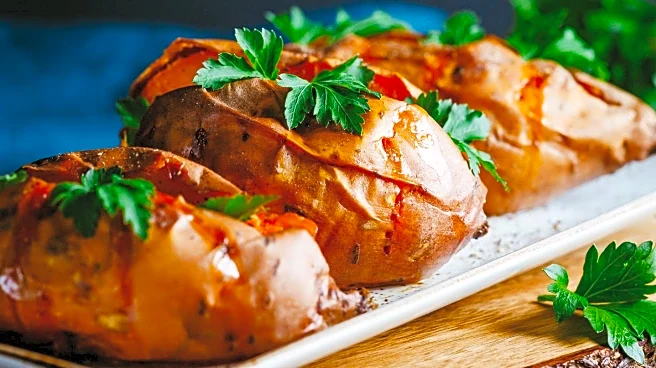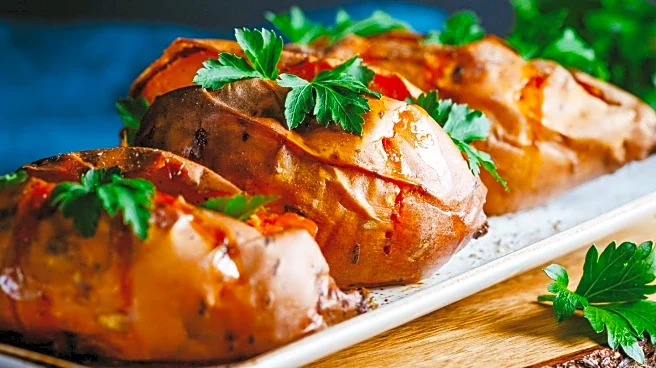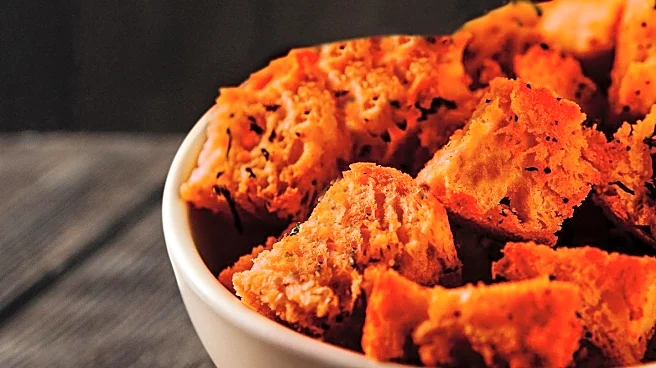What's Happening?
Cornell chicken, a 75-year-old barbecue chicken recipe created by Robert Baker, a Cornell University food science professor, continues to be a beloved dish in the United States. Known for its simplicity and flavor, the recipe uses a vinegar-based marinade with basic ingredients like vegetable oil, apple cider vinegar, poultry seasoning, and a beaten egg. This marinade transforms chicken into a dish that is crispy on the outside and tender on the inside. Originally developed to enhance the flavor of American cuisine, Cornell chicken has become a staple at cookouts, restaurants, and food festivals, particularly in upstate New York where Cornell University is located.
Why It's Important?
The enduring popularity of Cornell chicken highlights the impact of simple, well-crafted recipes on American culinary traditions. It underscores the importance of using basic, accessible ingredients to create flavorful dishes that can be enjoyed by a wide audience. The recipe's adaptability to various cooking methods, such as grilling, air frying, or using a cast-iron skillet, makes it a versatile option for home cooks. This reflects a broader trend in the culinary world towards sustainable and straightforward cooking practices that prioritize taste and accessibility over complexity.
What's Next?
As interest in traditional and regional recipes grows, Cornell chicken is likely to see continued popularity. Its adaptability to modern cooking appliances like air fryers ensures it remains relevant in contemporary kitchens. Additionally, the recipe's simplicity makes it an ideal candidate for culinary experimentation, potentially leading to new variations and adaptations. Restaurants and food festivals may continue to feature Cornell chicken, introducing it to new audiences and preserving its legacy as a classic American dish.
Beyond the Headlines
The story of Cornell chicken also touches on the cultural significance of food in bringing communities together. As a dish often served at gatherings and festivals, it plays a role in social bonding and cultural exchange. Furthermore, the recipe's historical roots offer a glimpse into mid-20th-century American culinary innovation, reflecting a period when food science began to influence everyday cooking practices.












